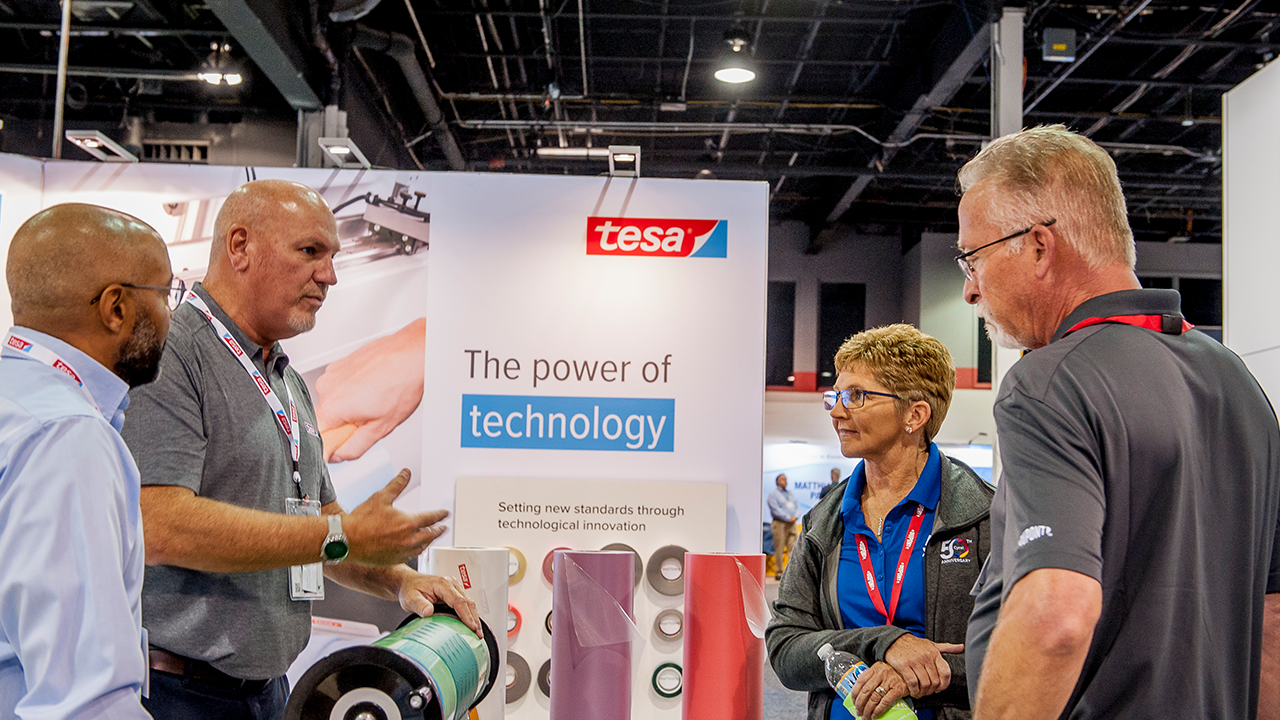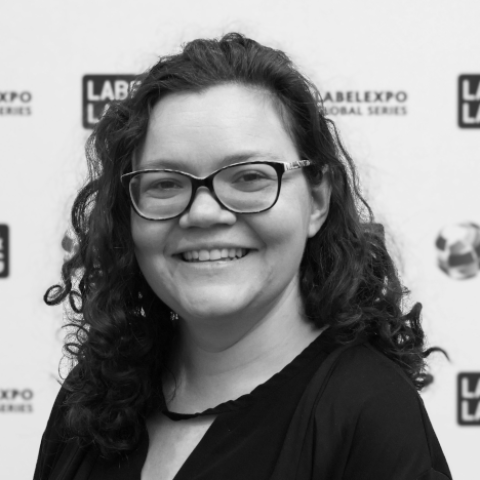Labelexpo Americas 2024: Plates and platemaking
From self-adhesive sleeves to automatic plate-mounters, exhibitors showcased products that addressed industry challenges.

Sustainability and automation were on display in the plate and platemaking sector as exhibitors showed off their products’ abilities to address environmental and workforce challenges.
Polymount US showcased its self-adhesive sleeves, which allow plates to be mounted without tape or sticky back. Not using tape to mount plates saves companies time and money while reducing waste, says Alan Rogers, vice president of sales at Polymount US.
In addition, Polymount partnered with Mark Andy Print Products to showcase a self-contained plate cleaner for narrow web machines. Polymount has been making this plate-cleaner for the wide-web market for 20 years, but it is new this year for narrow web. Mark Andy Print Products also showcased the VPM400 video plate-mounter, which enables increased productivity.
Tesa Tapes showed Twinlock technology, a self-adhesive sleeve for flexographic printing, eliminating the need for additional adhesive tapes. The foam surface can be activated with a solvent activator, which turns the surface tacky for mounting plates without tape. The foam can last up to five years. The company also displayed a new flexo tape for easy mounting and demounting of plates from the sleeves.
Luminite Products Corporation exhibited an alternative to plate-mounting tape by applying the engraved rubber directly onto cylinders, eliminating the need for sleeves and tape. While a less wasteful alternative to traditional plates, this product comes with the setback that a specific cylinder can only be used for one pattern. Luminite also produces continuous plates that can slide onto cylinders.
AV Flexologic offered increased automation with its SAMM USD 800 plate-mounter. The plate-mounter has been on the market for 15 years but has seen a surge in popularity since the pandemic.
Xsys and Anderson & Vreeland partnered to showcase several technologies. This included the Orbital XP, a water-wash system launched at the event. This system processes flexographic plates and is more automated and ergonomic than the Orbital X that Anderson & Vreeland has had on the market for 20 years.
The booth also showcased the nyloflex Xpress Thermal Processor. Thermal plate processing is not only more environmentally friendly than solvent wash – it is faster, says James Van Buskirk, technical director at Xsys. With thermal processing, a plate can be made in 50 minutes rather than three hours. Compared to water-wash, thermal can be used to process a larger range of plate materials.
Xsys’ software on display, the ThermoFlexX EcoFill and Catena ProServX, offer environmental benefits and improved efficiency. EcoFill reduces the washout solvent needed for ThermoFlexX imagers, while Catena ProServX is a cloud-based tool that helps with maintenance and quality control.
DuPont Cyrel exhibited several new products, including the Fast 1000 TD. This thermal processor is more user-friendly and sustainable than its previous iteration. It can process plates up to 35.4x47.2in in less than an hour with either an LED-based XPS exposure unit or the Cyrel 1000 ECLF. DuPont also has promoted a new East Fast EFM photopolymer plate designed for recycled and rough paper substrates.
CrownFlex, a Hong Kong-based company exhibiting at Labelexpo Americas for the first time, promoted a thermal processor as part of its platemaking system. CrownFlex’s system provides all parts of the platemaking process, a fast and environmentally-friendly option that produces no water or chemical waste and processes plates in 45 minutes.
Asahi Photoproducts continued to advocate for water-wash technology with its AWP-CleanFlat and AWP-DEW flexo plates. Asahi also showcased AFP-R, a low-solvent-consuming plate to help companies make the transition away from solvent.
In addition, Asahi promoted its AWP-Loop, a wastewater recycling system based on Asahi Kasei microza technology. The system reuses 70 percent of the 10 liters of water needed to produce a water-wash flexo plate.
Fujifilm showcased an updated version of its water-wash Flenex plates, in addition to two different sizes of water-wash processors.
The updated Flenex plate is more durable, with a reduced plate swell, and has a higher resolution. It can achieve a 200lpi at 4000dpi, with a 1 percent process dot, with a platemaking time of less than 40 min.
Stay up to date
Subscribe to the free Label News newsletter and receive the latest content every week. We'll never share your email address.


